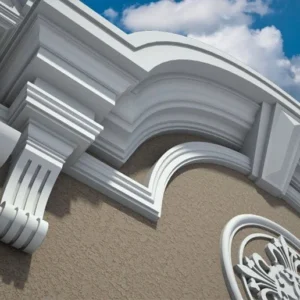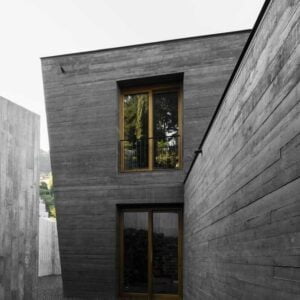The countryside, with its serene landscapes and tranquil ambiance, has always been a haven for those seeking respite from urban chaos. Yet, modern architectural trends have found a way to merge this rural charm with contemporary design elements. At the heart of this fusion lies the raw, unyielding beauty of concrete. This article delves into the elegance of concrete as it shapes modern countryside homes, offering a blend of durability and design sophistication.






The Timeless Appeal of Concrete
Concrete, a material often associated with urban skyscrapers and bustling city infrastructures, has found its way into the heart of the countryside. Its gray, stoic presence stands in stark contrast to the lush green fields, creating a visual spectacle.
Beyond its aesthetic appeal, concrete offers practical benefits. Its thermal properties make it an excellent insulator, ensuring homes remain cool in summer and warm during winter. This natural temperature regulation reduces the need for artificial heating or cooling systems, promoting energy efficiency.
The versatility of concrete is truly remarkable. Whether it’s polished to a smooth finish or left in its raw, textured state, it can adapt to various design preferences. This adaptability allows architects and homeowners to experiment with different styles, from minimalist to rustic.
Maintenance is another area where concrete shines. Unlike wood or brick, which might require periodic upkeep, concrete stands resilient against the elements. Its durability ensures that countryside homes retain their beauty and structural integrity for generations.
Environmental considerations further elevate concrete’s stature. As the world becomes increasingly conscious of sustainability, the use of locally sourced materials becomes paramount. Concrete, often produced locally, reduces transportation emissions, making it an eco-friendly choice for construction.




Blending with the Countryside Canvas
One might wonder how a material as stark as concrete can blend with the soft, gentle landscapes of the countryside. The answer lies in thoughtful design and placement. Nestled among rolling hills or overlooking a tranquil lake, a concrete home becomes a part of the landscape, complementing rather than overshadowing its surroundings.
The play of light and shadow on concrete surfaces adds a dynamic element to the static countryside backdrop. As the sun moves across the sky, the home seems to change, reflecting different moods and tones.
Gardens and green spaces play a crucial role in integrating concrete homes into the countryside. Cascading plants, blooming flowers, and even water features can soften the hard edges of concrete, creating a harmonious balance between man-made and natural elements.
The interiors of these homes further bridge the gap between the ruggedness of concrete and the warmth of the countryside. Wooden accents, plush furnishings, and large windows that let in natural light ensure that the inside feels as inviting as the picturesque exterior.
Lastly, the very shape and structure of the home can be designed to echo the contours of the land. Whether it’s a sloping roof that mirrors the gradient of a hill or a patio that extends into a meadow, the home can be molded to fit seamlessly into its environment.




Innovations in Concrete Design
The world of concrete is not static; it’s ever-evolving. With advancements in technology, we now have access to various finishes, textures, and colors. Gone are the days when concrete was just a dull gray. Today, it can be tinted to match the hues of the countryside, from earthy browns to subtle greens.
Stamped concrete is another innovation that has gained popularity. This technique allows designers to imprint patterns onto freshly laid concrete, mimicking the appearance of cobblestones, bricks, or even wooden planks. Such designs can enhance pathways, driveways, or patios, adding a touch of rustic charm.
Reinforced concrete, combined with materials like steel, offers increased strength and flexibility. This allows for more daring architectural designs, including cantilevered sections or intricate latticework, without compromising on safety or durability.
The introduction of lightweight concrete has opened up new possibilities, especially for multi-story countryside homes. By using materials like expanded glass beads or perlite, the weight of the concrete is reduced, making it easier to work with and allowing for more intricate designs.
Beyond the material itself, innovative construction techniques are also shaping the way we view concrete homes. Prefabricated concrete panels, for instance, can be produced off-site and then assembled on location. This not only speeds up the construction process but also ensures a higher level of precision and finish.



Concrete and Sustainability
As the world grapples with climate change and environmental degradation, the role of sustainable building materials becomes crucial. Concrete, when used responsibly, can be a part of the solution. By incorporating recycled materials like fly ash or slag, the carbon footprint of concrete production can be significantly reduced.
Thermal mass properties of concrete make it an energy-efficient choice. By absorbing heat during the day and releasing it at night, concrete homes can maintain a stable indoor temperature, reducing the need for artificial heating or cooling.
Rainwater harvesting is another area where concrete plays a pivotal role. Concrete cisterns or tanks can collect and store rainwater, reducing the reliance on external water sources and promoting sustainable water usage.
The longevity of concrete also contributes to its sustainability. A well-constructed concrete home can last for several generations with minimal maintenance, reducing the need for frequent rebuilds or renovations.
Lastly, by opting for local concrete production, transportation emissions can be minimized. This not only supports local businesses but also ensures that the environmental impact of construction is kept to a minimum.

Embracing the Future
The narrative of concrete in the countryside is one of transformation. From being seen as an urban material, it has carved a niche for itself in the heart of rural landscapes. As we look to the future, the potential of concrete seems limitless. With continued innovations and a focus on sustainability, concrete will undoubtedly remain a cornerstone of modern countryside architecture, marrying beauty with resilience.


Concrete, with its myriad qualities, has redefined countryside living. No longer just a material for urban jungles, it has shown that it can be both robust and refined, both modern and timeless. As architects and homeowners continue to explore its potential, concrete promises to shape the future of countryside homes, offering a perfect blend of elegance and endurance.












